Do you have a question about the Toyota FJ GSJ10 and is the answer not in the manual?
Explains the exterior design and visual features of the vehicle.
Details the coding system used to define vehicle specifications and configurations.
Presents a table of vehicle configurations based on destination, engine, and transmission.
Describes the design elements of the front exterior, referencing the FJ-40 series.
Details the rear exterior design, highlighting rugged features for off-road use.
Explains the design aspects of the vehicle's side profile and door configuration.
Details exterior paint colors, associated part numbers, and color names.
Specifies tire size, wheel dimensions, materials, and design options.
Describes the cabin's flexible space and functional design, focusing on the instrument panel and door trim.
Lists interior color options, their corresponding color numbers, and applicable parts.
Describes the available audio systems, head unit designs, speaker configurations, and connectivity.
Illustrates the placement of speakers throughout the vehicle, including the box woofer.
Provides details on speaker size, impedance, input rating, and manufacturer for each component.
Explains the features of the ceiling speaker utilizing roof headlining as a diaphragm for enhanced sound.
Details how the parking assist system informs the driver of distances using warning buzzers.
Describes the AC 115V 400W power outlet socket and its output limitations.
Explains the use of water-repellent and waterproof fabric for seat surfaces and its properties.
Introduces the vehicle's engine specifications, focusing on the 1GR-FE engine.
Details the gear ratios for manual (RA61F) and automatic (A750E, A750F) transmissions.
Explains the types of 4WD transfer systems, their gear ratios, and differential types.
Describes the front and rear suspension types, including wishbone and link coil designs.
Details the hydraulic power steering system and wheel types.
Details brake types, rotor sizes, booster, and control systems for different models.
Explains the function and types of SRS airbags for frontal and side impact protection.
Highlights the use of recyclable materials like TSOP for environmental sustainability.
Details the use of TSOP material in the vehicle's interior components for recyclability.
Provides an overview of the 1GR-FE engine's V6 configuration and key technologies.
Lists detailed engine specifications including displacement, output, torque, and capacities.
Illustrates the valve timing angles and operation range for the VVT-i system.
Presents engine output and torque curves as a function of engine speed.
Details engine features contributing to performance, reliability, noise reduction, and emissions.
Covers cylinder head covers, gaskets, and other core engine components.
Describes the aluminum cylinder head covers and the oil filler extension for serviceability.
Explains the use of steel-laminate gaskets and shims for improved sealing and durability.
Details the aluminum cylinder head, pentroof combustion chamber, and port designs.
Describes the aluminum alloy cylinder block, bank angle, offset, and bore pitch.
Details the aluminum alloy pistons, their head shape, skirt coating, and commonality.
Explains forged connecting rods, knock pins, and micro-grooved aluminum bearings.
Describes the steel crankshaft, its journals, balance weights, and roll-finished fillets.
Details aluminum crankshaft bearings with micro-grooves and bearing caps.
Explains the crankshaft pulley with torsional damper rubber for noise reduction.
Describes the aluminum and steel oil pans, integrated oil passages, and rigidity.
Describes how camshafts are driven, VVT-i controller, and shimless valve lifters.
Details cast iron alloy camshafts, oil passages for VVT-i, and timing rotors.
Explains timing chains, roller pitches, lubrication, and chain tensioner mechanisms.
Describes the integrated timing chain cover for cooling, lubrication, and weight reduction.
Details the pressurized lubrication circuit, oil filter, and cycloid rotor type oil pump.
Describes the oil pump's assembly patterns for improved serviceability and crankshaft mounting.
Explains oil jets for piston cooling/lubrication with check valves to maintain pressure.
Details the oil filter bracket placement for easy replacement and oil catch design.
Describes the pressurized cooling system, thermostat with bypass, and viscous fan.
Explains the water pump's volute chambers for uniform coolant circulation to cylinder banks.
Details the viscous coupling fan with bimetal control for three-stage speed adjustment.
Specifies the use and maintenance intervals for TOYOTA Genuine Super Long Life Coolant.
Describes throttle body, ETCS-i, ACIS, intake air chamber, and exhaust manifold materials.
Explains the full-fabric air cleaner element and charcoal filter for evaporative emissions.
Details the cable-less throttle body with integrated sensor and DC motor control.
Describes the intake air chamber with ACIS actuator for intake pipe length control.
Explains the two-piece intake manifold sealed with gasket and adhesive.
Details stainless steel exhaust manifolds with integrated TWCs for weight and emissions.
Explains the stainless steel exhaust pipe with integrated TWC and ball joint for noise reduction.
Describes the fuel return system, fuel cut control, plastic delivery pipes, and ORVR system.
Details the multi-layer plastic fuel tank construction and recyclable materials.
Explains the Direct Ignition System (DIS) and its advantages over distributors.
Describes the DIS ignition coils, integrated igniters, and spark plug caps.
Details the long-reach type spark plugs and their contribution to cooling system performance.
| Brand | Toyota |
|---|---|
| Model | FJ GSJ10 |
| Category | Automobile |
| Language | English |

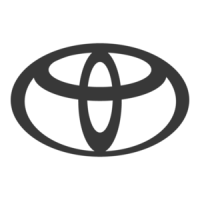
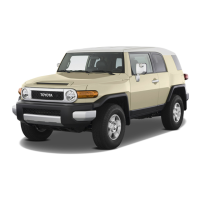
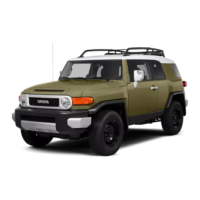
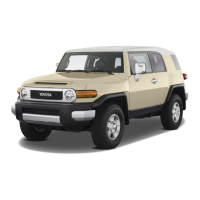

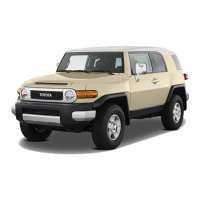
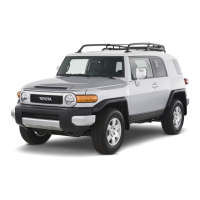
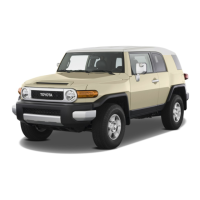
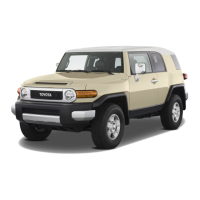
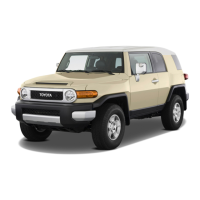

